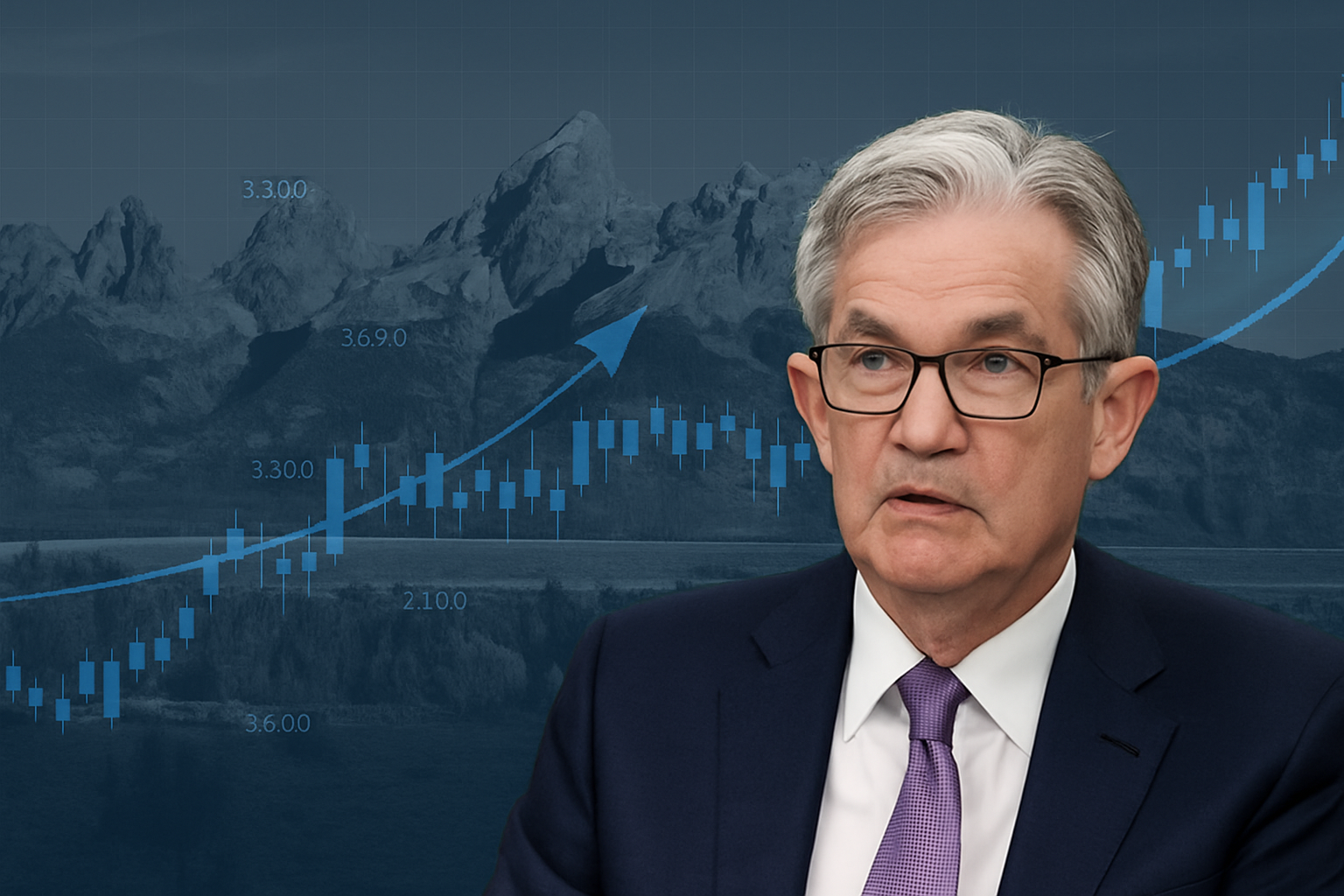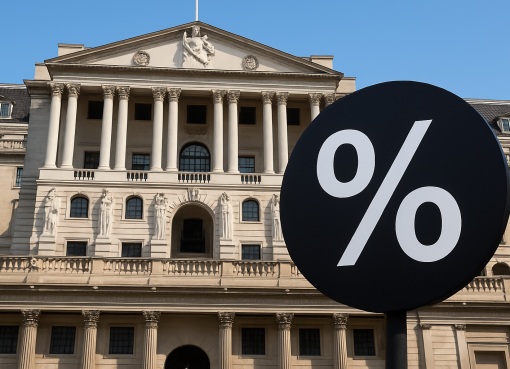Introduction
Federal Reserve Chair Jerome Powell is set to deliver a consequential address at the Jackson Hole Economic Policy Symposium on August 22, 2025. The event is one of the most closely followed by investors and economists each year, as it often sets the tone for U.S. monetary policy decisions heading into the autumn. With market conditions increasingly fragile, the financial community is bracing for Powell’s comments to either reassure traders or ignite volatility that could ripple through global markets.
Analysts have warned that if Powell signals a smaller than expected interest rate cut in September — for example, 25 basis points instead of 50 — equity markets could suffer a correction of as much as 15 percent before October. This potential pullback reflects the risk that investors, who have already priced in aggressive monetary easing, may interpret a cautious stance as a lack of conviction in the Fed’s commitment to supporting growth while containing inflation.
The Economic Balancing Act: Employment, Prices, And Fed Messaging
The Federal Reserve faces a dual challenge: stabilizing prices while maintaining healthy employment. Inflation readings appeared to cool in July, but wholesale prices rose more sharply than expected, casting doubt on whether disinflation is as strong as the headline figures suggest. These mixed signals make it difficult for policymakers to declare victory, leaving markets vulnerable to disappointment if Powell’s message does not fully align with expectations.
The labor market further complicates the picture. Weekly jobless claims remain steady, which suggests resilience. Yet, broader employment growth has slowed to its weakest level since 2010 when excluding pandemic years. This trend hints at a cooling jobs market, even as businesses struggle with wage costs and productivity challenges. Investors will be parsing Powell’s remarks for any acknowledgment of this duality.
His tone will matter as much as his content. If Powell emphasizes caution without providing a convincing case for future easing, markets may interpret it as hesitation. Conversely, if he signals confidence in the economy’s resilience but remains noncommittal on aggressive cuts, risk assets could falter as traders adjust their expectations.
Political Pressure: The Trump Factor And Data Integrity Concerns
Adding to the uncertainty is the influence of politics on monetary policy. President Donald Trump has consistently called for deeper and faster interest rate cuts, arguing that aggressive easing is necessary to secure economic momentum. Recently, his decision to replace the head of the Bureau of Labor Statistics following a weak jobs report sparked fears about political interference in independent institutions.
Such moves raise concerns over the integrity of economic data, which forms the foundation of central bank policy decisions. For investors, the possibility of blurred lines between politics and data accuracy adds a layer of risk. Powell’s task, therefore, is not only to reassure markets about the Fed’s policy direction but also to underscore the independence of the institution in the face of political pressure.
Currency And Global Themes: The Euro’s Momentum
While U.S. equity markets await Powell’s speech, the currency markets are already responding to shifting expectations. The euro has been gaining ground against the U.S. dollar, supported by signs of stronger growth in the eurozone and narrowing interest rate differentials. Recent data has shown that European economies are performing slightly better than feared, and this resilience is fueling renewed investor confidence in the region’s outlook.
Traders are watching the euro-dollar exchange rate closely. If Powell indicates a softer Fed stance, the dollar may weaken further, potentially allowing the euro to move toward higher levels. Such a trend would also reflect global investors diversifying away from U.S. assets amid uncertainty about the central bank’s policy trajectory.
Jackson Hole’s Structural Theme: Labor Markets In Transition
Each year, the Jackson Hole symposium is organized around a central theme. In 2025, the focus is on labor markets in transition, with discussions centered on demographics, productivity, and macroeconomic policy. This theme reflects broader concerns about how automation, artificial intelligence, and shifting population trends are reshaping workforces globally.
Powell’s speech is expected to address not only immediate monetary policy but also how these structural changes in labor markets will influence economic growth and stability in the long term. The symposium provides a stage where central bankers, academics, and policymakers debate how to adjust frameworks to meet the evolving demands of the 21st-century economy.
Portfolio Strategy: Defense, Technology, And Selective Exposure
For investors, the prospect of heightened volatility ahead makes strategy essential. Analysts suggest that portfolios should tilt toward defensive positioning while still capturing long-term growth opportunities in innovation. Specifically, companies categorized as artificial intelligence enablers, adopters, and adapters are expected to remain resilient as digital transformation accelerates.
At the same time, investors are encouraged to reduce exposure to overvalued stocks with weak earnings momentum. Rebalancing into reasonably priced equities with strong fundamentals can help cushion against a potential autumn correction. Historically, the months of September and October have often been turbulent for equities, making prudent preparation especially important in 2025.
Crypto Angle: Bybit’s Margin Trading Launch Amid Macro Concern
Beyond traditional markets, the cryptocurrency sector continues to evolve. Exchanges such as Bybit have introduced new margin trading products, offering users in Europe leverage under recently implemented regulatory frameworks. While this development is not directly tied to Powell’s speech, it illustrates how digital asset markets are carving their own path, often less influenced by central bank rhetoric and more by innovation and regulatory shifts.
Nonetheless, crypto remains sensitive to macroeconomic trends. A stronger dollar typically weighs on digital assets, while looser monetary policy often provides support. Investors in this space will also be watching Powell’s tone for signs of liquidity conditions that could influence speculative demand.
What Lies Ahead: A Defining Moment For Markets And Policy
As markets approach Powell’s Jackson Hole address, the stakes are unusually high. A dovish signal could temporarily calm nerves, but if the cut is perceived as too small, equities may face a steep sell-off. On the other hand, if Powell underscores caution and structural concerns without offering immediate support, the resulting uncertainty could weigh on sentiment just as much.
Either way, his words will likely shape investor psychology and market momentum for the remainder of the year. The central bank’s credibility and independence are under scrutiny, and Powell’s ability to navigate expectations may define the Fed’s influence in 2025.
Final Thoughts
Markets are entering a period where ambiguity itself is a source of volatility. Inflation trends remain unclear, labor growth is losing steam, and political pressure is clouding the independence of key institutions. Against this backdrop, Powell’s Jackson Hole speech becomes more than a policy update — it is a test of confidence in both the Federal Reserve and the broader U.S. economy.
For investors, the prudent course involves staying defensive, avoiding overvalued assets, and leaning into sectors aligned with long-term structural growth such as artificial intelligence and healthcare innovation. Currency traders should remain alert to euro-dollar dynamics as an early signal of global reaction to U.S. policy shifts. Meanwhile, crypto market participants must balance speculative opportunity with regulatory awareness.


